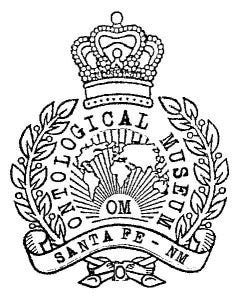Lines of Descent: The Ontological Museum, The Exquisite Family Records, and Their Living Lineage
The Ontological Museum and The Exquisite Family Records do not stand alone. They arise from a continuum of decentralized, poetic, and relational practices—those which resist commodification, gatekeeping, and fixed meaning. Among these ancestors: Mail Art, Collage and Assemblage, Fluxus, and Asemic Writing.
These traditions form the substratum of the Museum’s practice. They are not referenced—they are lived.
1. Mail Art: The Global Correspondence Web
The international mail art community, beginning in earnest in the 1960s and evolving through networks like Ray Johnson’s New York Correspondence School, made the postal system itself into a medium. This act subverted galleries, curators, and commerce. It privileged connection over recognition, gifting over valuation, and presence over permanence.
The Ontological Museum draws directly from this ethos. Its collection grows through direct exchange—hand to hand, mail to mail, dream to dream. The Museum is a receiver, not an institution. Artists contribute not to “get in,” but because they are already in relationship—through shared language, shared silence, shared frequency.
Like Mail Art, the Ontological Museum values the ephemeral, the handmade, the personal, and the wildly nonstandard. The envelope matters. The smudge matters. The imperfect is often the doorway.
The Exquisite Family Records, in turn, echo mail art in form: letters, fragments, annotations, disputed identities, contradictory narratives—all transported across time and space like psychic mail.
2. Collage and Assemblage: The Poetics of Juxtaposition
The collage and assemblage tradition, especially in the hands of Schwitters, Cornell, Höch, Rauschenberg, and later the Bay Area artists and correspondence networks, is not just a technique—it is a worldview.
To collage is to say: meaning does not exist in isolation. It is found in the friction and affinity of unrelated elements placed in proximity.
The Ontological Museum is itself a spatial collage—a layered assemblage of offerings, traces, and recovered moments. It is curated not by hierarchy, but by resonance and intuition.
The Exquisite Family Records are literary collages—memory assembled from fragments, rumors, and archival interference. Each family member is part bricolage, part fiction, part emotional truth.
Here, we see a shared logic: meaning as emergent, associative, and incomplete. The viewer is not told what something is. They are invited to follow the thread.
3. Fluxus: The Everyday as Sacred Gesture
Fluxus rejected the artwork as object and proposed the event, the instruction, the absurd act, and the everyday gesture as sites of meaning. Artists like George Brecht, Alison Knowles, and Dick Higgins did not seek to make art—they sought to dissolve the boundaries between art and life.
The Ontological Museum lives in that same porousness. It holds not just objects but moments: a note, a sound, a ritual, a shared meal. The Museum is not a stage for masterpieces—it is a space of attunement to presence.
Fluxus also embraced humor, multiplicity, contradiction, and ephemerality—all central to the Museum’s and the Records’ operating logic. A mislabeled envelope may be more revealing than a finished work. A tea stain may be a map.
4. Asemic Writing: The Language of the Untranslatable
Asemic writing—the practice of mark-making that resembles writing but carries no fixed semantic content—is a spiritual sibling to both the Ontological Museum and the Exquisite Family Records.
Where asemic writing opens the field of language to gesture, texture, rhythm, and emotion, so too do the Records resist closure. They are full of erasures, palimpsests, false translations, and pages whose meaning hovers just outside the grasp of logic.
The Museum, too, operates on a semiotic threshold—between symbol and silence, image and intention. A label may offer no name. A title may contradict the object. But the presence is still there—just not where the intellect expects it.
5. Toward an Ecology of Presence
Taken together, these lineages form a nonlinear, anti-hierarchical, trans-temporal ecology—a network of gestures and transmissions rather than a chronology of movements.
The Ontological Museum is not influenced by Mail Art, Fluxus, Collage, or Asemic Writing.
It is made of them.
It breathes their ethos.
It continues their rebellion—not against institutions per se, but against the narrowing of meaning and the commodification of the soul.
Conclusion: A Museum of Correspondence and Becoming
The Ontological Museum and The Exquisite Family Records exist where Fluxus action scores meet family trees drawn in smoke, where a collage is made not of paper but of memory, where the mail never quite arrives but always leaves a trace.
This is a museum that listens to the silences between languages.
It collects what others discard.
It honors what is gifted, not what is owned.
It invites each participant—whether artist, reader, viewer, or sender—to step into the role of Exquisite Correspondent.
And in this, it joins the long invisible lineage of artists who made the everyday into a portal, and art into a shared language of knowing without knowing.




Oh gosh I love this #7 Proof of Life. And I always said that I never understood Fluxus, our son-in-law is very much into it, but our daughter says I'm a Fluxus kinda artist. hahaha So Maybe I am. Anyway, loved reading this and The Ontological Museum has always been a favorite of ours.